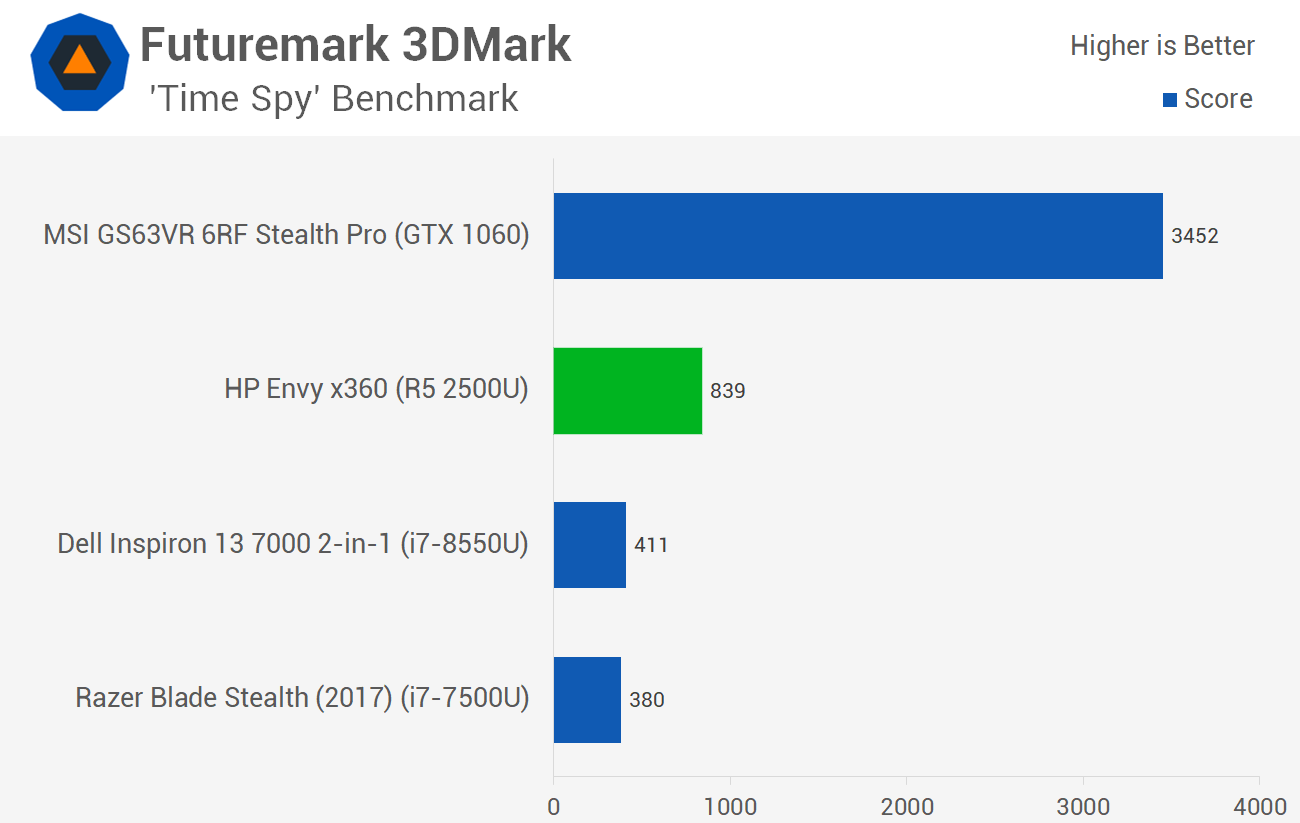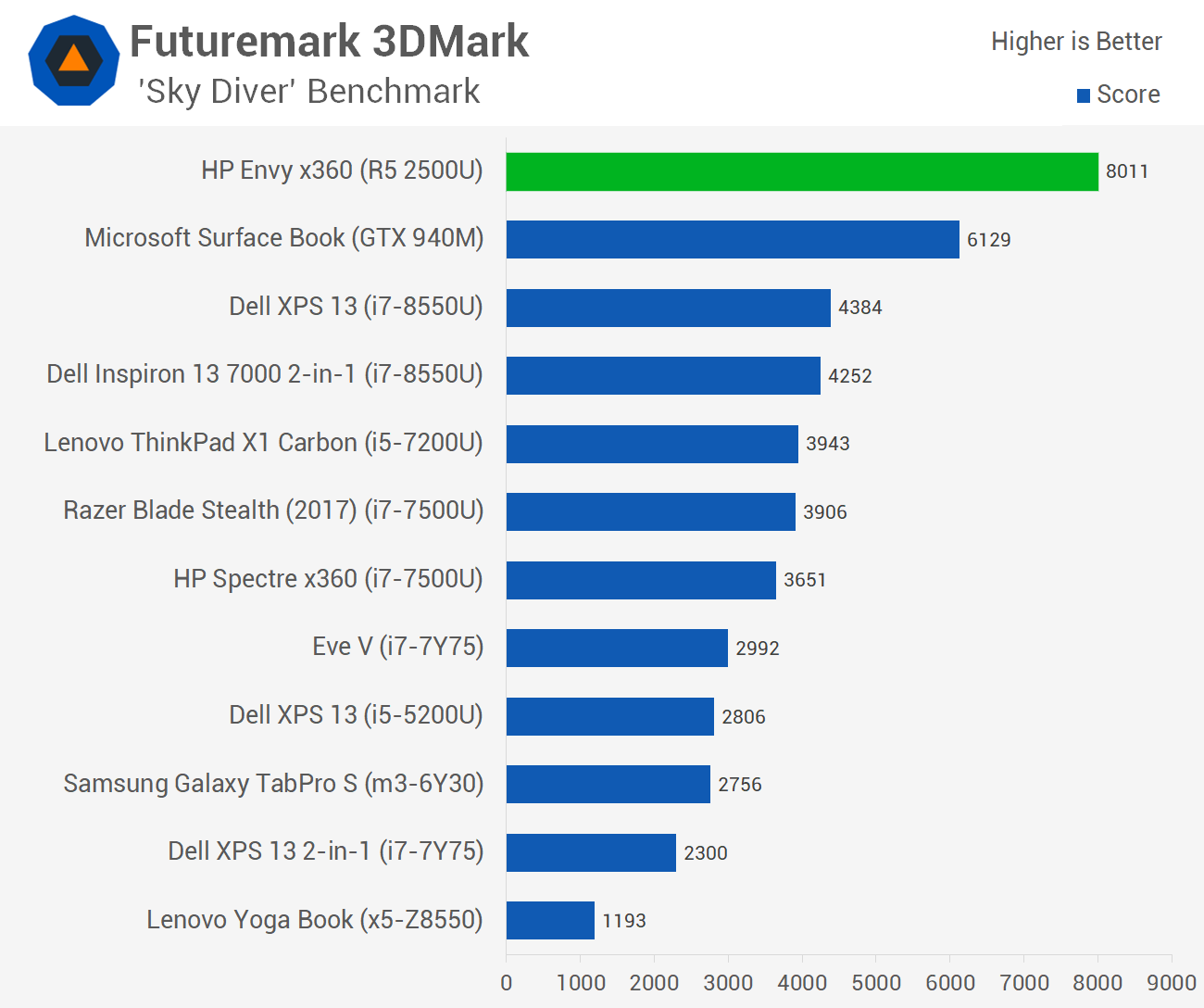3DMark Benchmarks
So we've seen how the CPU performs, let's move on to the big story regarding the Ryzen 5 2500U: the GPU. The Vega 8 GPU inside this chip is a beast compared to the UHD 620 graphics in Kaby Lake Refresh, boasting around 2.5x the raw compute power. When you consider this APU features the same 15W TDP, this is an impressive feat from the AMD team, and goes to show how well their graphics architecture scales down.

I'll get to actual gaming in a moment, but first I wanted to take a look at 3DMark. And I'm jumping right in the deep end here by looking at Time Spy, the most intensive 3DMark workload that's clearly way too intensive to run sensibly on a laptop.
However it does give some interesting insights, particularly as this test is entirely GPU limited. Here the Ryzen 5 2500U is just over twice as fast as the Core i7-8550U when viewing the overall score, and this improves to a 2.1x lead in the graphics score. What this shows is that in a very intensive GPU workload, Ryzen has more than a 2x lead in the same power envelope.



The Ryzen 5 2500U also has a 2.2x lead in Fire Strike, though as we move down into the less intensive workloads, Ryzen's lead starts to slip in the overall score as the tests become heavier on the CPU. In Sky Diver we see a 1.82x lead for Ryzen over the 8550U, and in Cloud Gate this drops to 1.33x.
Let's not forget here that we're comparing Ryzen 5 to a Core i7 either. The Ryzen 7 2700U uses a Vega 10 GPU with 640 shaders compared to 512 in the Ryzen 5, along with a clock speed boost, so when comparing Ryzen 7 to Core i7, AMD's APU will pull even further ahead.
